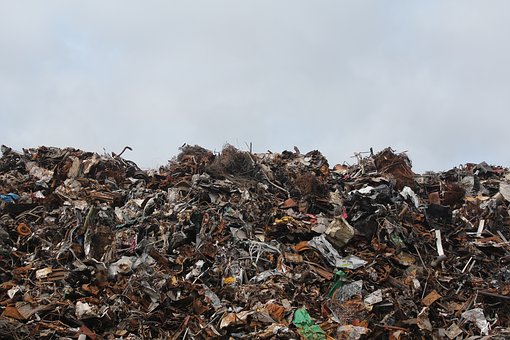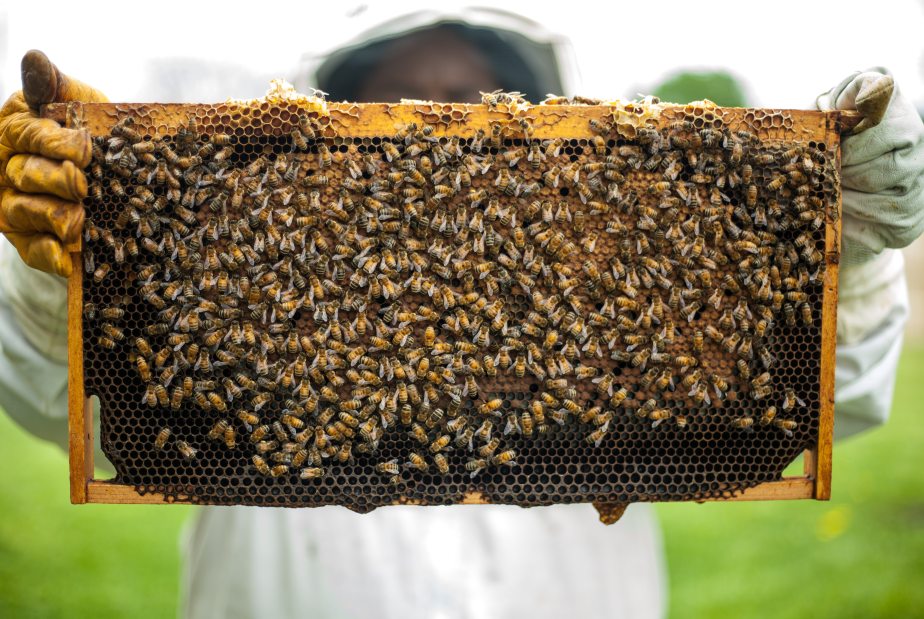The world has a waste problem. This isn’t new and it’s not surprising, but what may be surprising is that even ancient civilisations seemed to have an issue with waste management.
In as early as 6,500 BC archeologists have found that a Native American tribe that lived in the area of what is now known as Colorado, produced an average of 2.4 kilos of trash a day. Around 500 BC Athens Greece became home to the first organized city dump in western civilisation, making it a rule that garbage had to be disposed of no closer than 1.6 kilometers from the city limits. Fast forward to 1899-1901 and local authorities around the world begin to consider trash as one of the biggest problems facing communities. It was around this time that people began to feed garbage to pigs as a means of disposal, a practice known as “piggeries”. (Barbalace, 2003).
But even though the first civilisations had trash issues, the Industrial Revolution really kicked off our bad trash habits and shaped the way we see waste now. It was during this time that items like flour, that people previously had to buy in bulk, became available for purchase in smaller sizes and single-use items became increasingly popular (Mitchell, 2017). Waste has and will continue, to be one of the greatest issues facing our planet globally. Around the world, we dump a total of 2.16 billion tons of waste every year, and 99% of the stuff we buy gets thrown out within 6 months of buying it (The World Counts, n.d.). This number is only set to increase as our population rises. Without drastic change, the World Bank has estimated that by 2050 there will be a 70% increase in the trash we produce, and in effect, globally we will produce 3.10 billion tons of waste annually (World Bank 2019).

So what can be done about this trash epidemic? On a large scale, companies need to be held accountable for the products they produce, the method in which those products were made, and in what resources were used and how they were collected. On a smaller scale, we as consumers can make better choices about which companies to support and which products to buy. We can also make sure that we try to purchase as little single-use plastic as possible, recycle correctly, and we can put our organic matter to good use by composting them.
There is also another possible solution to some of our current trash woes, and it has the power to rid the world of waste one tiny mouthful at a time. I’m talking about insects.
Insects are a brilliant way to help us reduce our organic matter. Here in Australia companies like Goterra, are already implementing the use of insects for waste management. In 2018 they planned to use their larvae, which comes from the black soldier fly, to process around 200 tons of waste. They then put the processed waste to further use by turning it into feed for livestock, or by using it as a soil conditioner (Claughton and Bryant, 2018).
While farms like these may help to solve the organic waste problem there is still the issue of items that can’t be broken down as easily like plastic.
In the last 5 or so years, scientists have found two different types of larvae that can break down plastics. A team of researchers at the University of Stanford, California were able to successfully raise the larvae of the darkling beetle off a strict diet of styrofoam due to a particular type of bacteria they have in their gut. The research found that the mealworms showed no sign of ill health and were even as healthy as the control group, which ate only bran products, although they will continue to monitor the future generations of the beetle to make sure there are no side effects down the road, scientists are excited about the results and what this could mean for the future of plastics (Coldewey, 2015).
Likewise, a research team at the University of Cantabria, Spain found that waxworms, the larvae of the Greater Wax Moth also known as the Honey Moth, have a similar gut bacteria that allows them to break down polyethylene- the carbon atoms that are found in many plastic products like plastic bags (Arnold 2017).
The discovery of these gut bacterias is certainly an amazing breakthrough, but larvae breakdown the plastic materials at a very slow rate. For the darkling beetle larvae, each worm can eat only a few dozen milligrams per day. The waxworm is even less efficient as it takes 100 worms to breakdown just 92 milligrams of a plastic bag overnight, meaning it would take them around a month to eat one normal sized plastic bag.
Some of the short term goals for companies like Goterra that use insects to breakdown organic waste are in getting more funding, as well as working with lawmakers to make it easier to import insects. The short term goals for insects that can digest plastics are more research and funding to explore what other types of insects may be able to break down the materials, as well as other possible types of plastics that can be broken down.
Longer term goals for each perspective industry are a little more difficult. Perhaps companies that use insects for organic waste might look at implementing containers that can be used at every home, or at least available in every town or city. For scientists and researchers, they may look at trying to reproduce the insects natural gut bacteria and apply it at a large scale level to breakdown plastics quicker, and in much larger quantities.
Whether you’re an insect lover or a keen environmentalist, the idea of using insects for the future of waste management is fascinating. Only time will tell if insects will be as effective as other options, but there are a lot of benefits to them, they’re a pretty durable species, they reproduce and mature relatively quickly, and they don’t need very much space to thrive!
References:
Kenneth Barbalace. The History of Waste. EnvironmentalChemistry.com. Aug. 2003.
https://EnvironmentalChemistry.com/yogi/environmental/wastehistory.html
World Bank. (2019). Solid Waste Management. [online] Available at: http://www.worldbank.org/en/topic/urbandevelopment/brief/solid-waste-management
The World Counts. (n.d.). Tons of waste dumped – globally, this year. [online] Available at: https://www.theworldcounts.com/counters/shocking_environmental_facts_and_statistics/world_waste_facts
Mitchell, N. (2017). A Brief History of Trash, Or Why We Might be Living in the Golden Age of Garbage. [online] Apartment Therapy. Available at: https://www.apartmenttherapy.com/a-brief-history-of-garbage-232332
Goterra. (2019). Waste management — Goterra. [online] Available at: https://www.goterra.com.au/waste-management
Claughton, D. and Bryant, S. (2018). Could insects munch their way through the world’s waste? Could insects. ABC. [online] Available at: https://www.abc.net.au/news/rural/2018-05-10/insects-could-solve-the-worlds-waste-problems/9714190
Coldewey, D. (2015). INNOVATION Styrofoam-Eating Mealworms Could Happily Dispose of Plastic Waste. NBC News. [online] Available at: https://www.nbcnews.com/tech/innovation/styrofoam-eating-mealworms-could-happily-dispose-plastic-waste-n435901
Jordan, R. (2015). September 29, 2015 Plastic-eating worms may offer solution to mounting waste, Stanford researchers discover. Stanford News Service. [online] Available at: https://news.stanford.edu/pr/2015/pr-worms-digest-plastics-092915.html






